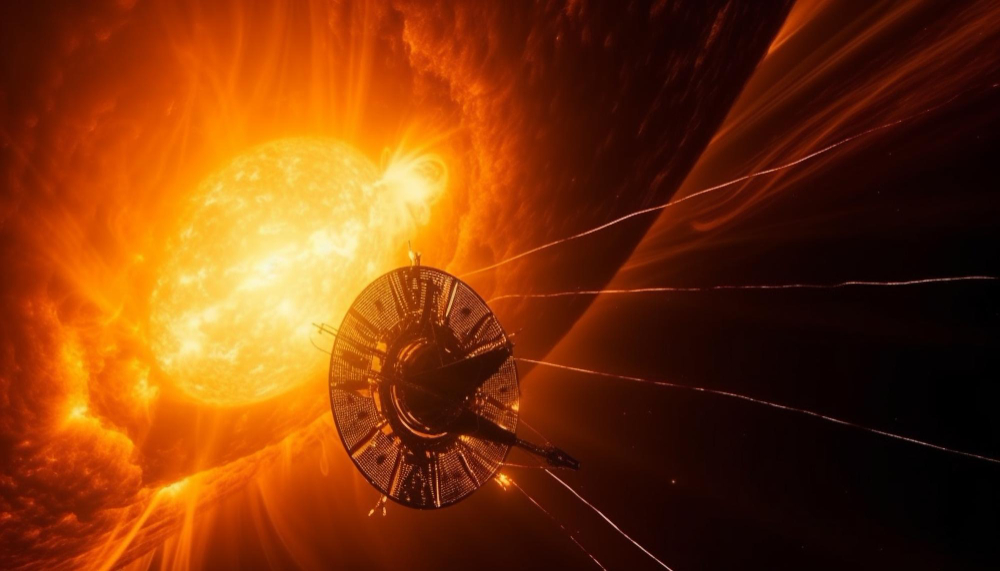
The sun, our celestial furnace, bathes the Earth in a continuous stream of radiant energy, fueling life and shaping our planet’s climate. But how does this energy, in the form of radiation, traverse the vast expanse of space to reach us? Let’s embark on a fascinating journey through the cosmos to uncover the secrets of how radiation transfers thermal energy from the sun to Earth, illuminating the intricate dance of light and heat that sustains life on our planet.
A Stellar Symphony of Light
At the heart of the solar system, the sun radiates energy in all directions, emitting a spectrum of electromagnetic radiation that spans from ultraviolet to infrared wavelengths. This radiant energy, produced by nuclear fusion reactions deep within the sun’s core, forms the lifeblood of our solar system, providing warmth, light, and nourishment to the planets that orbit it.
The Cosmic Commute of Solar Radiation
As photons, the fundamental particles of light, are born within the sun’s core, they embark on an epic journey through the sun’s dense layers and outer atmosphere. Traveling at the speed of light, these photons navigate the vast expanse of space, crossing millions of miles to reach the Earth in a matter of minutes. Along the way, they encounter various obstacles and interactions that shape their trajectory and intensity.
Illuminating the Path of Solar Radiation
One of the key principles that governs the behavior of solar radiation is the inverse square law. According to this law, the intensity of radiation decreases with the square of the distance from the source. In practical terms, this means that as solar radiation travels from the sun to the Earth, its intensity diminishes exponentially with increasing distance, resulting in a gradual weakening of its thermal impact.
Filtering the Sun’s Radiant Gift
As solar radiation penetrates the Earth’s atmosphere, it encounters a myriad of gases, particles, and molecules that act as filters and absorbers. Certain wavelengths of radiation, such as ultraviolet and infrared, are selectively absorbed or scattered by atmospheric constituents like ozone, water vapor, and particulate matter. This absorption process not only influences the distribution of thermal energy but also contributes to the formation of phenomena such as the greenhouse effect and atmospheric heating.
The Cosmic Reflection of Solar Energy
Not all solar radiation that reaches the Earth’s surface is absorbed and converted into thermal energy. A significant portion is reflected back into space by various surfaces, including clouds, ice caps, and landmasses. This phenomenon, known as the albedo effect, plays a crucial role in regulating the Earth’s temperature by influencing the planet’s overall energy balance. High-albedo surfaces reflect more sunlight and heat, while low-albedo surfaces absorb more, impacting local and global climate patterns.
The Dance of Heat and Light
Once solar radiation reaches the Earth’s surface, it undergoes a process known as radiative transfer, wherein it is absorbed, scattered, and re-emitted as thermal energy. This absorbed energy warms the Earth’s surface and atmosphere, driving weather patterns, ocean currents, and the water cycle. Radiative transfer is a complex interplay of physical processes that shape the Earth’s climate and environment, influencing everything from cloud formation to the distribution of heat across the globe.
The Cosmic Symphony of Energy Exchange
In the grand symphony of the cosmos, the transfer of thermal energy from the sun to Earth is a mesmerizing melody of light and heat, weaving together the intricate tapestry of life on our planet. From the sun’s radiant embrace to the atmospheric ballet of absorption and reflection, every step of this journey illuminates the interconnectedness of the universe. As we marvel at the celestial dance unfolding above us, let us never forget the profound impact of solar radiation on the Earth’s climate, ecosystems, and the very fabric of existence.

